There’s a bitter-sweet thing about digging around for an ideal guitar tone, and it’s that the sky really is the limit. Beyond the fact that every build and brand of guitar will have its unique tone signature, every little thing you run your guitar through will play a role in the sound that comes through the amp. Even a subtle drive boost from 3 to 4 on your tube screamer can make the difference between “whoa” and “WHOA”.
Keeping in mind how such a subtle change can make such a huge difference, there are things you can adjust on the guitar itself that can change its sonic characteristic entirely before its signal even reaches the first pedal. I’m not talking about swapping anything out – in fact I urge you to test out what I’m about to describe on one guitar you have at home.
If you think of your guitar’s pickups as its “ears”, you will agree with the general consensus that the closer they are to a sound (or vibrating string), the louder that sound is. While this is true, the distance between pickup and string can affect your tone in a lot more ways than just volume.
While you can simply go to Google and type in “ideal pickup height for guitar brand / model X”, and probably end up with a pretty good sound, it isn’t against the law to deviate from these measurements and perhaps find something that might suit you even better.
Whenever I’m trying to dial into a particular tone, I like to visit the extremes first. For example, I’ll listen to something with its treble setting at 10, followed by zero. This gives you an idea of that setting’s range, and makes it easier to find what you like (and don’t like!).Your pickups can be treated in a similar fashion. Try setting your pickups as high as you can get them (without having them connect with the low or high E strings when you fret them at the last fret).
Many pickups that are too close to the strings like this will end up having too strong a magnetic pull, interrupting a string’s vibrational pattern and cause it to produce a strange overtone / double-note effect. It’s not exactly conventional… but hey maybe it could be used for some kind of sound design! For those of you looking to have a guitar with very hot pickups that sounds in tune, however, this makes it easy. Simply back off the pickups until this warbled sound goes away, and you’ll have the hottest tone you can get without the negative sound effects.
You’ll know you don’t want your pickups super-hot like this if you’re the type of person who doesn’t always play balls-to-the-wall aggressive. You lose dynamic range, and if you want to have a warmer, more rounded tone then I’d suggest bringing the pickups down a tad more. The term I like to use for this is “granting yourself headroom”.
If you’ve ever done studio recordings or worked with a soundboard, you’ll know what that familiar red light looks like when a signal is too strong. It’s kind of the same thing with your pickup height, just unfortunately there’s no LED on the pickup to show when the signal is too hot. Basically, the “ideal” height would be somewhere that allows you to play hard at full volume and get the pickup to break up a bit, while still allowing you to soften up and play without the output being “in the red.” Plus, if you miss some of the tone you get from having your pickups as high as they possibly can, you can always compensate with a little gain from a pedal or an amp.
Every pickup is different, but here’s a rough middle-ground for a 2 humbucker guitar that should give you what I’m describing:
- Fret the Low E string at the last fret, and set the neck pickup to 5/64 distance between pole piece and string. Repeat for high E string.
- Fret the Low E string at the last fret, and set the bridge pickup to 4/64 distance between pole piece and string. Repeat for high E string.
Why set the bridge pickup closer? This picture explains why in a nutshell:
Simply put, a string’s vibrations are much tighter where it is closest to its bridge and nut. So, in order to match the output of the bridge pickup to the neck, it needs to pick up a similar vibration by being placed closer to the string. Which brings me to another point… ideally you won’t need to adjust the pole pieces of your pickups. These are specifically set for each individual string, and should already be matched as long as your guitar is set-up properly. If you’re noticing some serious output imbalance from a specific string, then it may be time to look into adjusting the pole pieces – but that should only be a last resort.
If you want even more “headroom”, simply try bringing the pickups further back! It really is just “salting to taste.” This just gave me an idea for another analogy… never salt anything before you’ve tasted it! Just like everyone’s taste buds are different, so are everyone’s ears. Instead of finding a measurement online, setting it, and being done, you should play the guitar first! Then you can tweak your pickup, then play the guitar again, tweak, etc etc…
When you’re done, you should have a tasty tone that is crafted just for you.
Happy playing!

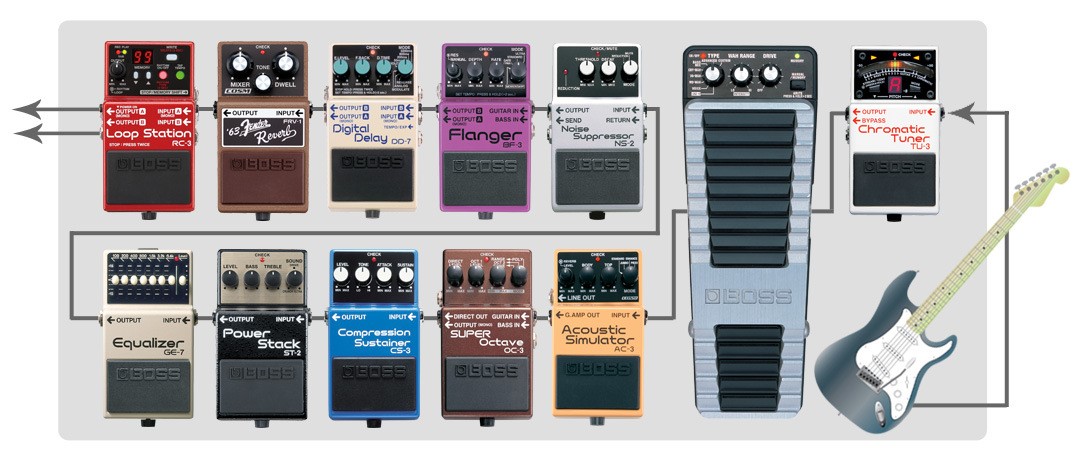
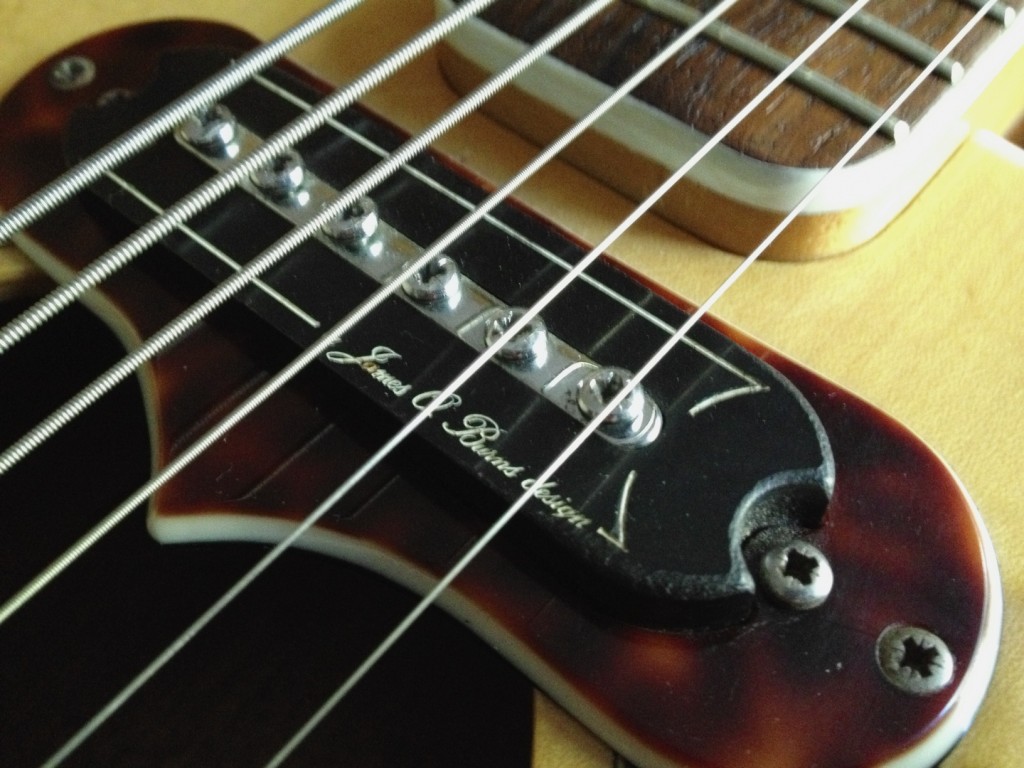
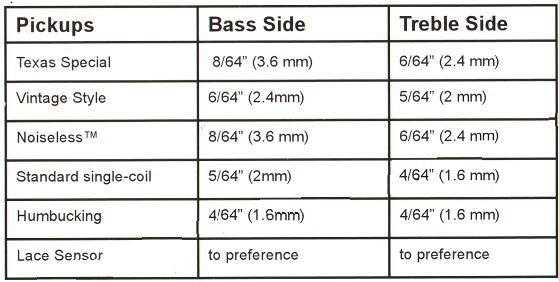
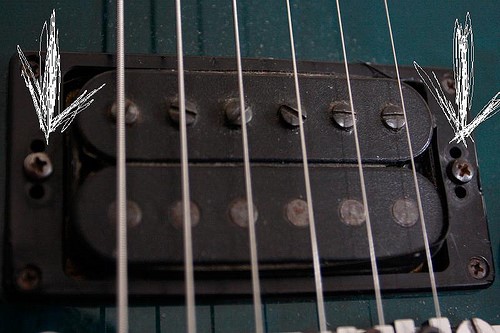

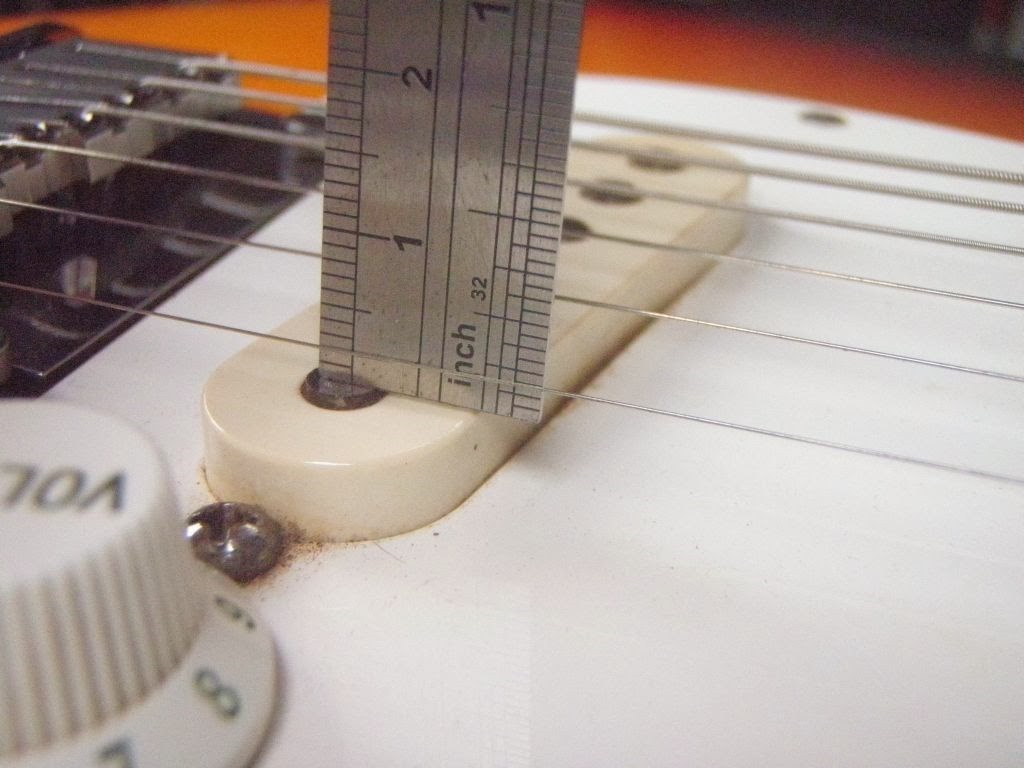

You say ideally the pole pieces should follow the radius of the neck. Then why are strat pole pieces all over the place and aren’t adjustable?